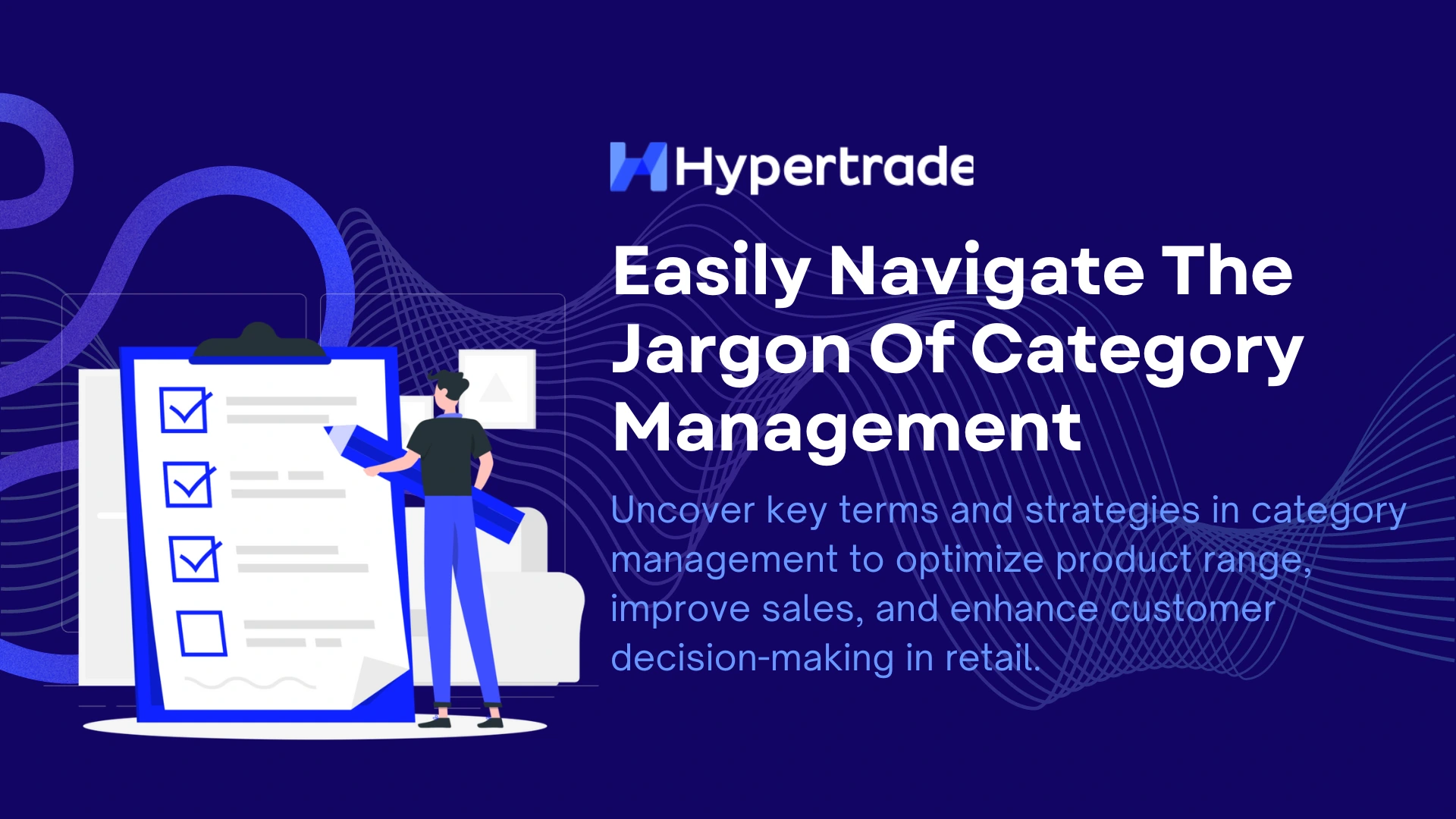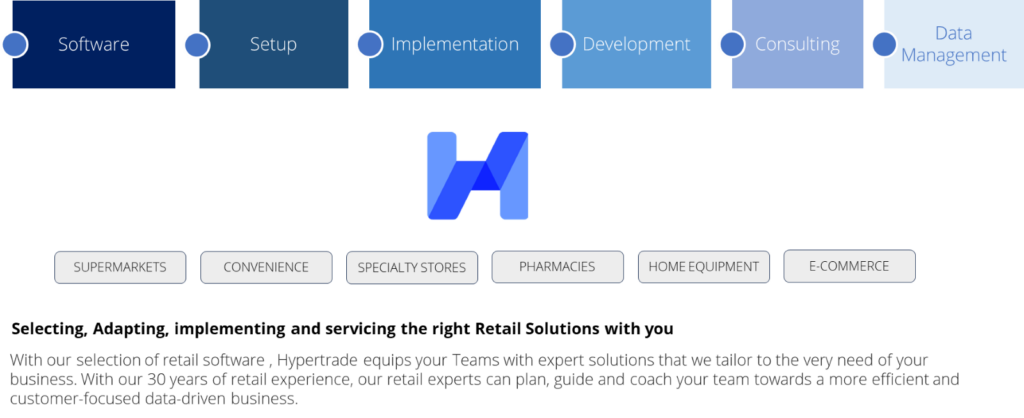Category management can become quickly complex, all the more that different companies or organisation use different words to designate similar components. We asked our Retail Experts to share what are the secrets behind all these technical terms.
Contents
1. Definitions
a) Range
b) Category
c) Range Width
d) Range Depth
e) Range Breadth
f) Customer Decision Tree
g) Assortment Effectiveness
h) Brand Effectiveness
i) Range Structure
j) Assortment Structure
k) Price Structure
l) Price Pyramid
m) Display Guidelines
n) Category Role
o) Category Strategy
p) Category Tactics
q) Omni Channel Strategy
r) Trade Up
s) Trade In
t) Trade Across
u) Supplier Role
v) Supplier Strategy
w) Range Review Process
x) Category Management Process
2. Range &Category Management Metrics
a) Market Share – Sales Contribution
b) Growth Contribution
c) Growth Measurements
i. Like for Like (LFL)
ii. Year to Date (YTD)
iii. Monthly Average Total (MAT)
d) Share of Assortment
e) Share of Brand
f) Share of Space
g) Share of Voice
h) Promotion Intensity
i) Penetration
j) Basket Number of Items
l) Cross Merchandising
m) Stock Days
n) Stock Aging
1. Definitions
a) Range
A Group of Products that addresses a consistent and homogeneous customer need. A range is made of Products (also called items or article), with a selling price used by customers to answer a consumption need. Then each product can have several variant (in size, color, flavor). Each variant has a barcode and is called a SKU (Stock Keeping Unit).
For the Retailer, the Range needs to ensure that it maximises Customers’ Choices and avoid duplicate items. If customers are unwilling to switch from one product type to another, the retailer needs to ensure that it provides customers with a complete set of products type (width) before it provides customers with many options in that product type (Depth).
The range focuses on Assortment, Display, Pricing.
b) Category
A category is the same as Range and includes its activation: Promotions. Nowadays, promotion is often enlarged to CRM although CRM is often managed by Marketing).
c) Range Width
The width defines the number of products a range comprise. The more the product, the wider the customer needs can be answered. For example, a T=Shirt can be long sleeve, short sleeve, round collar, v-collar, double stitched sleeves.
The Range Width’s usually represent the product’s attribute that Customers are not willing to switch. For example, they don’t want to switch between Jasmine Rice and Glutinous Rice.
d) Range Depth
The depth defines the number of variant available for one product. For example, a T-Shirt can be yellow, blue, red, white, …
The Range Depth generally represents product attribute on which customers can switch easily. For example, pack size: if there is no 1 KG Jasmine Rice, they can buy a 0.5 KG Jasmine Rice.
e) Range Breadth
The Range breadth defines the extent of the Width (up to what products types segmentation do we go) and the extent of the Depth (up to how many options do we propose).
The smaller the store format, the more important is the Range Breadth as space is limited, as are Shopper’s baskets.
f) Customer Decision Tree
Often called CDT (short for Customer Decision Tree), the Customer Decision Tree is the visual translation, in products groups and segments, of the successive logical questions a shopper is asking herself when buying a product in a category.
For the retailer, the CDT helps define the category and segments as well as the product grouping and their adjacencies.
For the Customers, the CDT helps them to easily read the shelves, measure the choice offered and easily find the products they want.
g) Assortment Distribution
The assortment distribution defines in which store an item is distributed. Though it might seem easy, the optimization of the distribution very often represent the low hanging fruits of sales growth. Because of the complexity of Range Structures, Store Format and Store Clustering, retailers’ Teams are often lost in mapping the distribution.
The priority, for both retailers and suppliers, is to ensure that items which are both among the Top 20% national sales and with less than 100% distribution be immediately distributed in all stores.
h) Assortment Effectiveness
In a range, each item represent a percentage of the total sales. If we calculate the sales contribution of each item, sort them from the largest contribution to the smallest, and add up the sales contribution to the previous one, we have a Paretto visualization of the Assortment Effectiveness. We then realise that just a few items make up for most of the sales (the famous 80/20 rule).
The less there are items with minimal sales contribution, the more the Assortment is effective. Because its space is limited, the retailer will always be looking for low performing items (i.e. with very low sales contribution) to delete. If suppliers know some of its item are in this case, they should either review their retail Mix or be ready for de-listing.
i) Brand Effectiveness
The Brand effectiveness compares Brands Share of Assortment (the total number of their items represent how many percent of the total assortment) with the Brand’s sales Contribution.
A Brand with low effectiveness has a share of Assortment bigger than its share of sales. If some of its low performing items are duplicates or similar items from other Brands, its they should either review their retail Mix or be ready for de-listing.
j) Range Structure
To be built and managed, a range need a structure that defines it. The range Structure is made of
- The Assortment Structure
- The Price Structure
The range structure is essential for the Category managers as it will guide her among the choices she has to make to improve the Range effectiveness. For the Customer, the Range structure guarantees the stability in choice and prices
k) Assortment Structure
The Range Width, Depth and Breadth, supported by the CDT, define the outlook of the range and how it should be perceived by Shoppers. The Assortment Structure builds on this and defines:
- Number of SKUs
- Number of Brands
- Number of Product Type (Private Label, Exclusive Items, Import Items, Local Items…)
The assortment structure needs to simultaneously support the positioning of the retail brand, support the mission of the store format and deliver enough profitability for the business model.
An Assortment Structure is only valid for one type of Store. The more precise the Assortment Structure is, the more accurate the offer for the Shopper is, and the easier the work for the Category Manager is. Know the Assortment structure is a clear advantage for any supplier.
l) Price Structure
The price structure defines how the retailer wants to address its Shoppers Target needs (a wealthy population around is more given to accept expensive products), its price image (What does the retailer wants its shopper to think as far as its “value for money” characteristics is concerned, and the profitability of the Range. In practice, for each segment of the range, the price structure will define how many items or brands should be offer by price type. In general, 3 price types are identified: Good (rather cheap), Better (average price) and Best (most expensive).
Beyond the standard performance’s analyses by segments and formats, the price structure delivers additional insights on where the opportunities – and challenges – are.
m) Price Pyramid
The Price pyramid visually represents the sales share (value volume) of the Category by Price Segment. These price segment can be the same as defined in the Price Structure or different.
The key benefits of the Price pyramid is to identify around what Selling Price level are most of the Shoppers buying the Product. It also helps identify the level of choice (and therefore competition) in every price segment.
n) Display Guidelines
The display guidelines defines the main rules products should be displayed on the shelf. Always articulated following the customer flow, it comprises:
- Horizontal order of display
- Vertical order of display
- Pack Size positioning
- Price level positioning
- Number of SKUs
o) Category Role
The category role defines how the retailer wants its category to be perceived by its shoppers in each store format, store size or location. Depending on the store positioning, its size, its format and even sometimes each location, each category can be focused more sales volume, sales value or margin rate. These grouping are called Roles. While the definition of roles can vary, it is generally accepted that there are 4 main roles:
- Destination: High sales value and high margin
- Traffic: High sales volume and low margin
- Seasonal: Medium sales value and medium margin
- Convenience (low sales and high margin)
A Category can be assigned a role strategically, and the analysis of its performance can show that its effective role is different. For each role, the strategy and tactics for each role are different. It is critical for the supplier to know which role its category effectively is in each store format, Region or Cluster. Supplier will then be able to develop business Plan that supports that Strategy.
p) Category Strategy
The category strategy defines the Role in which the retailer wants a category to play – or how its wants its shoppers to perceive it. The available strategies will therefore be:
- Reinforce a category in its role
- Shift a category from one role to another
Every category cannot be a Destination. Make sure you clearly understand what the current role is played by your category I a given store type, size or location and where you customer wants to drive it. It will be the backbone of your Business Fit
q) Category Tactics
Category tactics define the set of actions required to successfully implement the Strategy. They are grouped by components of the retail Mix
- Assortment
- Price
- Space
- Display Communication
- Promotion
- Customers
r) Omni Channel Strategy
Omni Channel strategy means a strategy that covers both online and offline sales channel. AS of today, retailers are more talking about O2O (online to Offline, Offline to Online) strategies. O2O better describes the various purchasing methods shoppers can now use. Online to Offline corresponds mostly to a purchase online and a pick-up in store. Offline to Online corresponds to what is now called “infinite aisle”, where kiosks are displayed at the end of an aisle in a store or anywhere else for that matter and proposes additional products that are not displayed in store.
s) Trade Up
Trade Up generally defines a strategy where retailers and manufacturers want to shoppers to spend more on their usual products. For example, if they generally buy a rice at 1 USD per kilo, it would correspond to make them buy a rice at 1.15 USD per kilo. Trade Up could be summarised as “1 $ More”. It usually focuses on existing shoppers of that category.
A trade up strategy can be done through premium added to the upper price level product of the range.
t) Trade In
Trade In generally describes strategies that aim to increase the number of baskets in a category. If the basket value remains the same. It could be summarised at “1 more Shopper”
A trade in strategy can be done through price discount on high volume items and massive displays supported by signage, tasting and other in-store activities to draw’s shopper interests
u) Trade Across
Trade across defines a strategy that aims at increasing the number of products in the shoppers’ baskets. It could be summarised as “1 More Product”.
A Trade Across can be leveraged through Multi-Pack promotions for example. It can also be built through cross-merchandising analysis (which could impact categories adjacencies) or impulse products purchase.
v) Supplier Role
Several suppliers provide different products and Brand in a category. The retailer will assign a specific role to the suppliers to successfully implement its category strategy. For example, some suppliers will be leveraged to:
- Generate Volume (Traffic / Routine)
- Margin (Convenience)
- Innovation (Destination)
As it is critical for Retail Buyers to assign specific role to specific vendors, it is also critical for suppliers to know which role they have been assign, if this role fits them and what they need to do if they want to play another role.
w) Supplier Strategy
The supplier strategy is the fact of assigning roles and corresponding objectives to each supplier in the category to implement its strategy and financial objectives.
x) Range Review Process
The range review process is the process by which the Retailers is reviewing the performances of its range, compares it to the budget and the mare and integrates customer trends to identify what are the required changes in its Range to increase its performances.
It is critical for Buyers and Suppliers to share a common knowledge of the process itself, as well as the performance criteria considered, to jointly take the best decisions.
y) Category Management Process
The category Management process is the process by which the retailer (and manufacturers as well for their own category) assess the performances of its category and defines the required tactics to achieve its financial objectives.
The retailer category management process ends up with a category activity planning and strategic choices for its suppliers.
2. Range & Category Management Metrics
a) Market Share – Sales Contribution
The market share – or sales contribution – defines the ratio of sales (in value or volume) of a defined group (category, sub-category, format, supplier) compared to the sales of the total group. It is expressed in %
When a supplier sale grow more than the category sales, its market share inside the retailer – or its sales contribution – is growing. In this case, the supplier is a Category Growth Driver.
b) Growth Contribution
Growth contribution defines the share of growth (in sales value, volume, margin…) of a defined group (category, sub-category, format, supplier) compared to the total growth of the total group. It is expressed in %
c) Growth Measurements
Growth can be defined in different scopes. Below are the most frequently. Growth can be expressed in % (for example, the market share grew by 1%, from 4% to 5%) or in points (in the same example, the market share grew by 25 points).
It is also important that growth measurements depends on the periods that are compared.
i) Like for Like (LFL)
When 2 periods are compared with the same number of stores. If some new stores have been opened during the period, they are not considered. LFL growth defines the organic growth of existing stores
ii) Year to Date (YTD)
Year to date (YTD) refers to the period beginning the first day of the current calendar year or fiscal year up to the current date. YTD information is useful for analyzing business trends
iii) Monthly Average Total (MAT)
MAT can be used in comparison: MAT this Year compared to MAT last year. It corresponds to the monthly average for the last 12 months. For example, if we are in September, MAT TY (This Year) corresponds to the average of the period from October 17 to September 18. MAT LY (Last year) would the correspond to the average of the period from October 16 to September 17;
d) Share of Assortment
Share of Assortment defines the number of SKUs of a specific scope vs. a larger scope. For example, if the Rice category has 100 SKUs and Royal Umbrella has 25 skus in this range, its share of Assortment is 25%
e) Share of Brand
Same concept as Share of Assortment, applied to a Brand
f) Share of Space
Same concept as Share of Assortment, applied to running feet (also called linear meter)
g) Share of Voice
Same concept as share of Assortment, applied to promotion. If there are 15 promotions in the Rice category and Royal Umbrella has 3 promotions during that same period, Royal Umbrella Share of Voice is 20%.
h) Promotion Intensity
Promotion intensity is the ratio between sales generated by promotion compared to total sales during the same period. If the total sales is 100 and 20 were generated from items on promotion, the promotion intensity is 20%.
i) Penetration
Penetration rate of a category is a ratio defined by the total number of Tickets with at least a product from that category divided by the total number of tickets during the period. The higher the penetration rate, the higher the number of customers that come into the store buy products from this category
j) Basket Value
Defines the average Ticket Value of a store scope during a defined period. The basket value can be calculated at store level, but also at category level or any other product’s attribute level.
k) Basket Number of Items
Defines the average number of pieces of the similar item in a shopper’s basket for a category, a brand or any other dimension.
l) Cross Merchandising
Is a calculation that identify, for a specific category, Brand, product, what are the most often products purchased at the same time by shopper. This information is useful to optimise layout through category adjacencies as well as joined product displays – in promotion or not
m) Stock Days
Defines the number of available days of sales in the inventory, based on the average daily sales value. If the stock value is 100 and the average daily sales mount 5, then there is 20 Stock days.
n) Stock Aging
Is a report that defines the current stock value (or volume) in different stock days segment.
o) Price Index
A price index (plural: “price indices” or “price indexes”) is a normalized average (non-weighted) of price relatives for a given class of goods or services in a given scope of retailers, at a specific moment.
For example, imagine we are comparing the selling price of a similar item among 3 retailers. The selling price we capture are P1, P2 and P3. The Average selling price of this item is called Pa.
Then the Price Index for this item, is equal to [ Pi P1, P2 or P3)/ Pa] x 100
3. Tools
a) Category Management Process (source: NIELSEN)

b) Category Tactics Table

c) Retailer Score Card

d) Category SWOT

e) Supplier Scorecard

f) Category Scorecard








